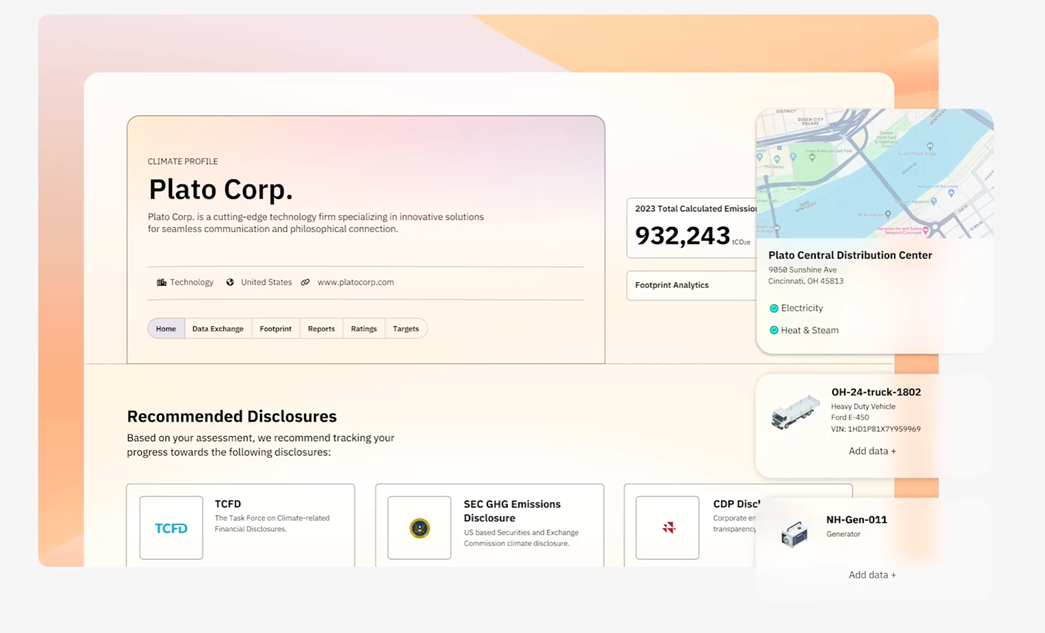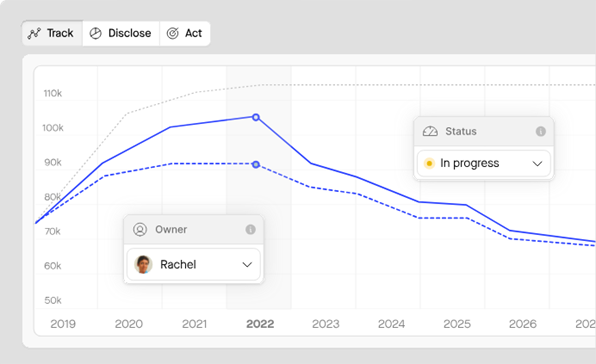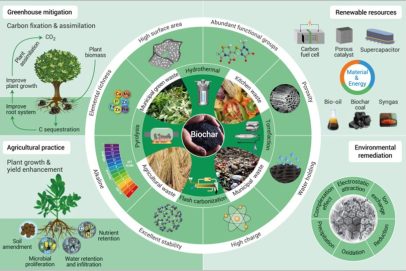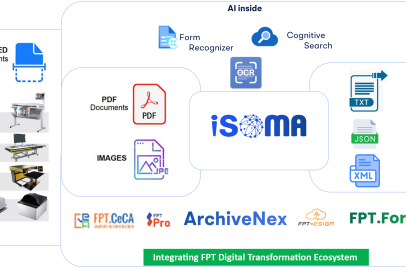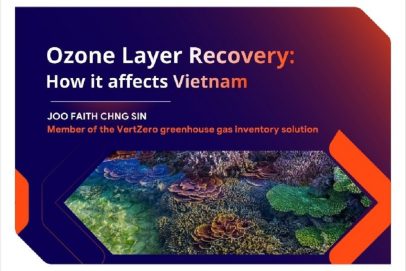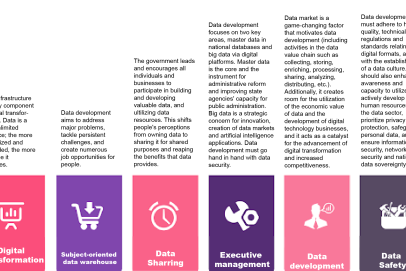Top 05 Carbon Accounting software in 2025
In the context of a global transformation towards sustainable development, ESG (Environment – Society – Governance) standards and Net Zero goals are no longer voluntary, but have become mandatory for all businesses – from multinational corporations to small and medium-sized enterprises. At the international level, many countries and regions have issued mandatory regulations such as CSRD (EU Corporate Sustainability Reporting Directive), which requires companies operating in the European market to measure and publish greenhouse gas emissions according to strict standards.
In Vietnam, the Government has officially committed to achieving net zero emissions by 2050 at COP26, and at the same time issued Decree 06/2022/ND-CP, clearly regulating the inventory and mitigation of greenhouse gas emissions, the roadmap for establishing a carbon credit exchange system and periodic reporting responsibilities for many key sectors such as energy, etc industry, transportation, construction, agriculture…
Some important criteria that businesses need to consider when choosing software include:
- The ability to flexibly integrate with existing systems (ERP, CRM, financial software…) through open APIs.
- Applying artificial intelligence (AI) to automatically connect emission factors, analyze trends, detect data biases, and support emission reduction planning.
- Supports international standards such as GHG Protocol, ISO 14064-1 and the ability to update to the latest regulations.
- Reporting automation features such as “one-click reports” make it easy to standardize the output.
- Flexible scalability and updates with enterprise size and long-term emission reduction roadmap.
- The interface is user-friendly, easy to use, and suitable for non-technical users.
- Professional technical support service, quick response and companionship during deployment and operation.
- Practical implementation experience at similar enterprises or in the same industry.
In this article, we will take a look at the Top 05 typical carbon accounting software in 2025 – based on international criteria and practical needs of businesses – to help you find the most suitable solution for your journey to reduce emissions and develop sustainability.
Criteria for choosing the top carbon accounting software
Before choosing the right carbon accounting software, businesses need to evaluate based on the following core criteria to ensure that the tool can comprehensively support effective measurement, reporting and reduction of emissions – while meeting increasingly stringent requirements from the market and the law
1. Compliance with international standards
A carbon accounting software is only really effective and recognized when it complies with international standards that have been widely used in the field of environment and sustainable development. This not only helps businesses ensure accuracy and transparency in emission reporting, but also makes it easy to integrate with the global ESG monitoring system and meet requirements from international investors and partners. Specifically, the software needs to support the following standards:
- GHG Protocol: This is the most popular global framework of standards for greenhouse gas inventory, developed by the World Resources Institute (WRI) and the World Business Council for Sustainable Development (WBCSD). The GHG Protocol divides emissions into 3 scopes (Scope 1, 2, 3) and provides detailed guidance for businesses to measure and report emissions comprehensively and consistently.
- ISO 14064: is an international standard issued by the International Organization for Standardization (ISO) that focuses on principles, requirements, and guidelines for quantifying and verifying greenhouse gas emissions. The fact that the software supports ISO 14064 makes it easy for businesses to demonstrate the accuracy of emission data in audits or independent verifications.
- SBTi (Science Based Targets initiative): This is a global initiative that encourages businesses to set emission reduction targets in line with the global temperature limits established in the Paris Agreement. An integrated SBTi software will support businesses to build and track the progress of emission reduction based on science-based targets, rather than simply responding to external requirements.
- IPCC Guidelines: Guidelines issued by the Intergovernmental Panel on Climate Change (IPCC) provide methodologies for calculating and emission coefficients by specific sector, region, and type of activity. It is an internationally recognized learning methodology basis and is also the foundation of many national inventory programs, including Vietnam.
- When the software fully complies with the above standards, businesses can rest assured that the emission data obtained is not only accurate and transparent, but can also be used to serve ESG reporting, green financial records, or participate in domestic and foreign carbon markets.
2. Full measurement range
A carbon accounting software is highly appreciated not only because of its modern interface or technology, but most importantly, the ability to fully measure three emission ranges according to international standards:
- Scope 1 – Direct emissions: The amount of greenhouse gases emitted from sources that the business owns or directly controls, such as emissions from boilers, fossil fuel-powered vehicles, or production processes.
- Scope 2 – Indirect emissions from energy consumption: Includes emissions arising from the use of electricity, heat, steam or refrigeration that businesses purchase from outside. Although there are no direct on-site emissions, this is still a mandatory part of the report as it relates to production and operations.
- Scope 3 – Emissions in the value chain: the most difficult part to measure because it includes emissions that are not under the direct control of the enterprise, such as emissions from input materials, third-party logistics activities, business travel, consumption and disposal of products after sale, etc. Despite its complexity, Scope 3 accounts for a very large proportion of total emissions, posing a great challenge for many businesses. According to CDP’s estimates, Scope 3 emissions account for an average of about 75% of a business’s total emissions. However, the importance of Scope 3 varies greatly by industry and can account for almost all of a company’s emissions (for example, the financial services industry, where Scope 3 emissions account for 99.98%). In addition, other studies have shown that the supply chains of eight major industries account for half of all global greenhouse gas emissions, and that Scope 3 emissions from energy-intensive industries are growing faster than Scope 1 and 2.
3. Scalability and multi-industry
In the context of the ongoing green transition in all sectors of the economy, an efficient carbon accounting software cannot apply a “one-size-fits-all” model. Therefore, scalability and customization at scale – industry is the key factor that helps software really promote value in the long term.
4. Suitable for many business sizes
A small and medium-sized enterprise (SME) often has limited resources, a simpler process than a large corporation – where emissions come from dozens of factories, hundreds of supply chains and countries.
→ Software needs to support flexible deployment, from a simple model with manual data to an automatic integration system, depending on the ESG maturity level of each business.
5. Multi-industry compatibility
Each industry has different emission characteristics:
- Production: emissions from fuels, chemicals, production processes;
- Logistics: emissions from fleets, transportation, cold storage;
- Real estate: energy consumption, building materials;
- Services: indirect emissions from offices, business travel, financial investment, etc.
- An ideal software should have a library of emission coefficients by industry, the ability to measure specific activities (e.g., financial capital flows in banks, the amount of materials in construction, etc.).
6. Customize according to your own strategy
Not all businesses are at the same stage in the Net Zero roadmap. Some have just started their emissions inventory, some have set SBTi targets or are preparing CSRD reports. Therefore, the software needs to allow flexible customization of features such as:
- The set of reporting indicators;
- Scope 3 modules according to domestic or cross-border supply chains;
- Connect to your existing ERP/CRM system.
7. Testimonials from reality
To ensure the credibility and effectiveness of carbon accounting software, verification through practical and transparent factors is extremely important.
First of all, specific case studies from businesses that have implemented the software are the most vivid demonstration of the ability to support measurement, reporting and emission reduction in the real business environment. For example, a large manufacturing company using software can reduce errors in emissions measurement by up to 20%, while saving time on monthly reporting through automation, thereby improving the efficiency of greenhouse gas management.
Feedback from customers is also a key factor in evaluating the software. Businesses often appreciate solutions that have a user-friendly interface, are easy to use, and provide fast and professional technical support. A logistics company that applied carbon accounting software shared that dedicated technical support helped them quickly solve data-related problems and integrate with the internal management system, thereby shortening the implementation time and improving the accuracy of emission reporting.
In addition, the experience in obtaining certificates according to international standards such as ISO 14064-1 in Asia is also a great advantage, demonstrating the technical capacity and level of compliance with global standards of the software. This contributes to improving the trust of businesses in the reliability and transparency of the carbon accounting system they choose to implement.
Finally, transparency and the ability to constantly update are essential. The software needs to have a mechanism for periodically updating emission factors, new input data and technological improvements to conform to international standards and changes in legal regulations. This transparency helps businesses rest assured that emission data is processed and reported accurately and objectively, and ensures the ability to quickly adapt to new requirements in the green transformation journey.
The synthesis of the above factors creates a solid foundation to help businesses choose the right carbon accounting software, contributing to promoting an effective, transparent and sustainable emission management process.
8. Integrating modern technology
Currently, sources of greenhouse gas emissions are often scattered in many different departments in the enterprise, such as accounting, human resources, and sales,… This makes data collection complex and time-consuming due to the need to coordinate with multiple departments and process a large amount of information. Therefore, carbon accounting software with the ability to integrate open APIs, allowing automatic connection and synthesis of data from existing systems such as ERP, CRM, and financial software, will help reduce this burden significantly. This integration not only saves time and limits errors due to manual data entry, but also increases efficiency in collecting and managing emissions data in a more synchronous and accurate way.
In addition, the integration of artificial intelligence (AI) in carbon accounting software is increasingly becoming a prominent trend. AI not only supports identifying anomalies in data or analyzing emission trends over time, but also has the ability to automatically connect appropriate emission factors based on activity codes or consumption types, helping users save time and minimize the risk of errors in the calculation process. In addition, many software now also integrates the “one-click report” feature, which allows to automatically synthesize and standardize input data in a report format in accordance with standards such as GHG Protocol or ISO 14064-1, making it easy for businesses to complete emission reports in just a few simple steps.
Another important factor is the scalability and up-to-date capabilities of the software. In the context of greenhouse gas regulations and emissions reporting that are constantly changing in the direction of becoming more stringent and detailed, the software needs a flexible architecture to easily upgrade sets of standards, update new emission factors, or expand the range of calculations for different types of emissions (directly, indirectly, along the supply chain, etc.). The ability to keep up to date with these changes not only ensures compliance with the new regulations, but also helps businesses maintain accuracy and transparency in their emissions reporting over time.
Therefore, the ability to integrate open APIs, AI applications, and easily expand and update are not only modern technology features, but also key factors that businesses need to consider when choosing carbon accounting software. These factors help ensure flexibility, save time and improve data management efficiency, thereby supporting businesses to implement emission reduction strategies quickly, accurately and adapt to the ever-changing requirements of sustainable development.
9. Language & localization support
When choosing carbon accounting software, businesses need to pay attention to specific factors that make the software really suitable and effective in the context of their operations.
First of all, the software should have a user-friendly, easy-to-use interface, and support the right language for users, helping to minimize barriers to access and increase convenience in the application process. An intuitive interface will help employees quickly get up to speed and operate the software more efficiently, especially for businesses that are just starting to implement emissions management.
Second, the software needs to be able to customize emission factors according to actual conditions and local data sources or specific industries of the business. Since the world’s common emission factors sometimes do not fully reflect the reality of each region or sector, this customization feature enhances the accuracy and practicality of greenhouse gas reporting.
In addition, an indispensable important factor is that the software must have a professional technical support team, deeply knowledgeable about legal regulations as well as the specifics of the business’s industry. This ensures that businesses receive timely support, effectively solve problems arising in the process of deploying and updating appropriate software with changes in international regulations or standards.
In particular, in the context of reality in Vietnam, the process of collecting emission data is often scattered across many departments and branches and requires complex inter-agency coordination, while many businesses still do not have a dedicated ESG team or only a very small team. Therefore, the presence of the deployment team in Vietnam is a great advantage. They not only directly support businesses in setting up systems and training users, but also help coordinate effectively between departments to speed up the implementation progress, ensuring the synchronization and accuracy of data.
In conclusion, the choice of carbon accounting software is not only a technological decision, but also an important start in the strategy of emission management and sustainable development. The criteria of a user-friendly interface, the ability to customize emission factors and in-depth technical support will help businesses make the right assessment and make the right choice, thereby building a solid foundation for the ESG journey and towards the goal of Net Zero effectively and sustainably.
Top 05 typical carbon accounting software in 2025
To support businesses in choosing the right carbon accounting software, below is a list of Top 05 typical carbon accounting software that is currently highly appreciated for its accuracy, customizability, technology integration, and professional technical support services. These software not only meet the criteria of user-friendly interface, customized emission factor, and technical support, but are also trusted by many businesses around the globe in their journey to manage emissions and implement sustainability goals such as ESG and Net Zero.
1. VertZéro – An in-depth carbon accounting solution exclusively for Vietnamese businesses
VertZéro is a greenhouse gas emission inventory and management software platform developed by FPT Corporation – a leading technology corporation in Vietnam. This solution supports businesses to calculate, track and report emissions in all three scopes (Scope 1, 2 and 3), and integrate scenario modeling capabilities to build emission reduction roadmaps in line with Net Zero and ESG strategies.
Outstanding Features:
- Comprehensive emissions management: Supports greenhouse gas measurement and reporting in accordance with GHG Protocol, ISO 14064 and TCFD, including Scope 3 – a complex but important scope for businesses with large supply chains.
- Customization by industry: Allows customization of emission coefficients, report templates, and measurement models according to industry characteristics (retail, finance, manufacturing, real estate, etc.).
- Open API Integration: Easily connect to existing ERP systems, CRMs, financial software, and data platforms to automate data collection and minimize manual operations.
- Emission reduction scenario modeling: Assist businesses in setting up Net Zero scenarios, analyzing costs – efficiency, and making optimization decisions.
- Compliance and standardization: Fully meet the requirements for greenhouse gas inventory, disclosure and verification according to legal frameworks and international standards.
Typical customers:
- VinFast (automobile manufacturing – heavy industry)
- Tran Duc Corporation (construction and green building)
- MB – Military Bank (finance – banking)
2. Greenly
Greenly is a carbon accounting software developed in France, specializing in providing emission measurement and reduction solutions for businesses of all sizes. This software integrates data analysis with expertise from climate experts to create personalized solutions, helping businesses reduce their greenhouse gas footprint.
Outstanding features of Greenly:
- Full support for three emission ranges (Scope 1, 2, and 3): Greenly allows businesses to assess and mitigate emissions from direct and indirect sources, including the supply chain.
- Activity- and spend-based approach: The software uses real-world data from a business’s operations and spending to calculate emissions, helping to increase accuracy and minimize errors.
- Open API integration: Greenly allows connection to existing systems such as ERP, CRM, which helps automate the collection and processing of emissions data.
- Certified by reputable organizations: Greenly complies with international standards such as GHG Protocol and ISO 14064-1, and has been accredited by TÜV Rheinland for accuracy and technical compliance.Greenly
Typical customers:
Greenly has served more than 2,500 clients globally, including large enterprises such as HSBC, HelloFresh, AXA, Givenchy, and companies in the technology, finance, manufacturing, and services industries
3. Persefoni
Persefoni is a carbon accounting software specifically designed for large businesses and financial institutions. The software stands out for its ability to integrate deeply into the financial system and support reporting in compliance with international standards such as the SEC (US Securities Commission) and IFRS (International Financial Reporting Standards).
Outstanding Features:
- Deep integration with the corporate financial system.
- Support reporting compliance with international standards such as SEC and IFRS.
- Accurate and transparent emission management, in accordance with ESG reporting and audit requirements.
Typical customers:
Persefoni’s typical customers include Fortune 500 companies, large financial institutions and multinational corporations such as:
- Bain & Company: Strategic Partner, supporting investment companies and businesses in developing emission reduction strategies and climate reporting.
- SMBC (Sumitomo Mitsui Banking Corporation): Implemented Persefoni for itself and provided it to customers in Japan to manage greenhouse gas emissions. Medium
- Pittsburgh Penguins: Partners with Persefoni to advance sustainability goals, including managing emissions from stadium operations.
4. Plan A
Plan A is a GHG management platform that aims to reduce emissions, helping businesses – especially in Europe – simplify the process of inventorying, reporting and cutting greenhouse gases. Plan A’s tools are TÜV certified and integrate scientific solutions with a team of consultants to ensure compliance and efficiency.
Outstanding Features:
- Integrating emissions inventory and creating Net Zero emission reduction strategies
- Data automation, warning of progress to achieve emission targets
- Compliance with international standards, support for ESG reporting, CSRD
Typical customers
- BMW – Automotive Industry:
- Chloé – Haute Couture:
- Flix (FlixBus) – Transportation Industry:
5. Sweep
Sweep is a sustainable data management platform with offices located in Paris, Montpellier, and London. This software helps businesses achieve their climate goals by providing a comprehensive emissions inventory and analysis tool. Sweep has been ranked as the leading platform in the field of carbon accounting software according to the latest report from IDC Vendor MarketScape, surpassing many large and long-standing competitors in the industry.
Outstanding Features:
- Powerful ESG data management: Sweep is capable of handling large volumes of data, ensuring data integrity, and providing dynamic analytics, supporting businesses in making strategic decisions about emission reduction.
- Flexible and customizable: The platform allows customization according to organizational characteristics and has an extensive library of emission factors. In particular, the intuitive “Sweep trees” model makes it easy to simulate the supply chain.
- Strengthen supplier cooperation: Sweep facilitates sustainability and procurement departments to build climate programs and track progress towards emission reduction targets.
- Sustainability Reporting: Assisting in the preparation of reports that comply with international standards such as GHG Protocol and Bilan Carbone, in line with ESG disclosure requirements.
Typical customers:
Investing in Carbon accounting Software – Choosing a Strategy for a Sustainable Future
In the context of increasingly serious climate change and environmental, social and governance (ESG) standards becoming an integral part of business activities, carbon accounting (GHG inventory) is no longer a formal or voluntary job. This has become a mandatory requirement for many businesses, especially those that participate in global supply chains or are geared towards developed markets.
Choosing the right carbon accounting software plays a key role in ensuring the accuracy, transparency and efficiency of the entire process of collecting – calculating – reporting emissions. The software mentioned in the article are all leading solutions, meeting a variety of needs from small and medium-sized enterprises to large-scale corporations, with many different industries.
However, no software is “best for all.” Enterprises need to consider choosing a solution that is suitable for internal capacity (team, data, process), industry characteristics (production, service, finance, etc.), scale of operation and local legal context. A suitable software not only helps save time and costs but also creates a foundation for businesses to improve their competitiveness and be ready to catch up with green finance and sustainable investment opportunities in the future.
|
Exclusive article by FPT IS Technology Expert Mr. Tuan Pham – PhD Candidate in Climate Finance, Director of VertZéro Greenhouse Gas Inventory Solutions |
References
- World Resources Institute. (n.d.). Trends show companies are ready for Scope 3 reporting under US climate disclosure rule. Retrieved from https://www.wri.org/update/trends-show-companies-are-ready-scope-3-reporting-us-climate-disclosure-rule#:~:text=Scope%203%20emissions%20account%20for%2075%25%20of%20companies’%20greenhouse%20gas,Scope%201%20and%202%20emissions.
- Persefoni. (n.d.). Customers. Retrieved from https://www.persefoni.com/customers
- Greenly. (n.d.). Greenly – Carbon footprint & ESG software. Retrieved from https://greenly.earth/en-gb
- Plana Earth. (n.d.). Plana Earth. Retrieved from https://plana.earth/
- Sweep. (n.d.). Sweep platform. Retrieved from https://www.sweep.net/platform
- TÜV Rheinland Vietnam. (n.d.). Corporate carbon footprint. Retrieved from https://www.tuv.com/vietnam/en/corporate-carbon-footprint.html





